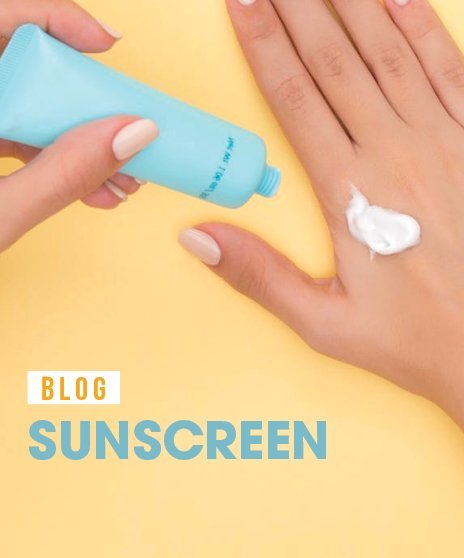By Darcie Wood
What is a sunburn?
Who hasn’t had that painful, red annoyance after being in the sun too long, but what is a sunburn, really?
A sunburn is a form of radiation burn that affects living tissue, such as skin, that results from an overexposure to ultraviolet (UV) radiation, commonly from the sun. Common symptoms of a sunburn include red or reddish skin that is hot to the touch, painful, causes general fatigue, and sometimes mild dizziness.
Did you know that sunburns can lead to Melanoma?
Even a single sunburn can increase a person’s risk of skin cancer. This is because when the skin absorbs ultraviolet radiation from sunlight, it can damage the genetic material in skin cells. In the short term, this damage can cause sunburns. In the long term, it builds up and raises the risk of skin cancer. It’s likely that a combination of factors, including environmental and genetic factors, causes melanoma. Still, doctors believe exposure to ultraviolet (UV) radiation from the sun and from tanning lamps and beds is the leading cause of melanoma. Did you know on average, a person’s risk for melanoma doubles if he or she has had more than five sunburns, but just one blistering sunburn in childhood or adolescence more than doubles a person’s chances of developing melanoma later in life. A study by Brown University that followed 100,000 women over a twenty-year period found that five serious sunburns between the ages of 15-20 increased their chances of being diagnosed with melanoma skin cancer by 80 percent.
https://www.facebook.com/P3HealthPartnersNevada/videos/404861250376655/
So, what do you do to protect yourself from sunburns but still get that tan you want during the summer?
The steps to take to get tan without getting sunburned is to wear sunscreen instead of sunblock. Sunscreens allow some of the sun’s rays to penetrate, giving you some tanning action while shielding you from many harmful UVA and UVB rays. Choose water resistant sunscreens, avoid peak sun hours, and build up your time in the sun slowly.
What kind of sunscreen should you use?
Dermatologists recommend using a sunscreen with an SPF of at least 30, which blocks 97 percent of the sun’s UVB rays. Higher-number SPFs block slightly more of the sun’s UVB rays, but no sunscreen can block 100 percent of the sun’s UVB rays. SPF 30 is the most common level for most people and skin types. No sunscreen can block all UV rays. What we do know is that SPF 15 blocks 93 percent of UVB rays, SPF 30 blocks 97 percent of UVB rays and SPF 50 blocks 98 percent of UVB rays. The difference between 30 and 50 is about 1 percent.
What is the difference of broad-spectrum SPF sunscreens?
Broad-spectrum SPF refers to sunscreens that protect the skin from both UVA and UVB rays. Even with a high SPF, if a sunscreen isn’t broad spectrum, you won’t be protected from all UVA rays.
What about sunscreens with zinc oxide?
Zinc oxide is also the only active sunscreen ingredient approved by the FDA for infants under six months, which is a striking fact. Zinc oxide is a better sunscreen ingredient, as it offers the best UVA protection of all current sunscreen chemicals, and titanium dioxide is second best. Sunscreens with zinc start protecting you as soon as you put them on. You may have heard you should look for a broad-spectrum product that protects against both UVA and UVB rays. Any sunscreen that contains the physical blocker zinc oxide or titanium dioxide will have you covered.
How often should you put on sunscreen?
Sunscreens should be applied 30 minutes before sun exposure to allow the ingredients to fully bind to the skin. Do you really need to reapply every 2 hours? Reapplication of sunscreen is just as important as putting it on in the first place, so yes you should reapply the same amount every 2 hours. There is one exception when it comes to this rule about reapplication. Since sweating, sunlight, and water breakdown the effectiveness of sunscreen, if you are spending the day indoors applying sunscreen once in the morning before leaving your home will protect you for much longer than two hours.
Other ways to avoid sunburns?
Avoid the sun during the peak hours of 10am to 2pm, seek shade, wear clothing with UPF protection, wear sunglasses with UV protection, wear a wide-brimmed hat, always apply sunscreen 15 minutes prior to going outside, use sunscreen year round, use broad-spectrum sunscreen, use sunscreen with a SPF of 30 or higher, use water resistant sunscreen, use plenty of sunscreen, reapply sunscreen every 2 hours, don’t forget to apply sunscreen to vulnerable areas such as ears, neck, lips, top of feet, or bald areas if hair is thinning, take sunscreen with you wherever you go, and don’t use expired product.
If I’m sunburned, now what do I do and how do I treat a sunburn?
You can take a pain reliever, like ibuprofen or naproxen to help control pain and swelling of sunburn, cool the skin, by applying a clean dampened towel with cool tap water to the affected skin. You can also take a cool bath, apply aloe Vera lotion, gel, or calamine lotion may be soothing. Make sure to drink plenty of water to prevent dehydration, leave small blisters alone and treat peeling skin gently. For severe sunburn, try over the counter hydrocortisone cream, which may ease the discomfort and protect your sunburn from further sun exposure. Lastly, avoid applying “caine” products, such as benzocaine.
So go out and have fun but remember to always wear your sunscreen and reapply every two hours so you can avoid that painful sunburn and keep your chances of getting melanoma down.


